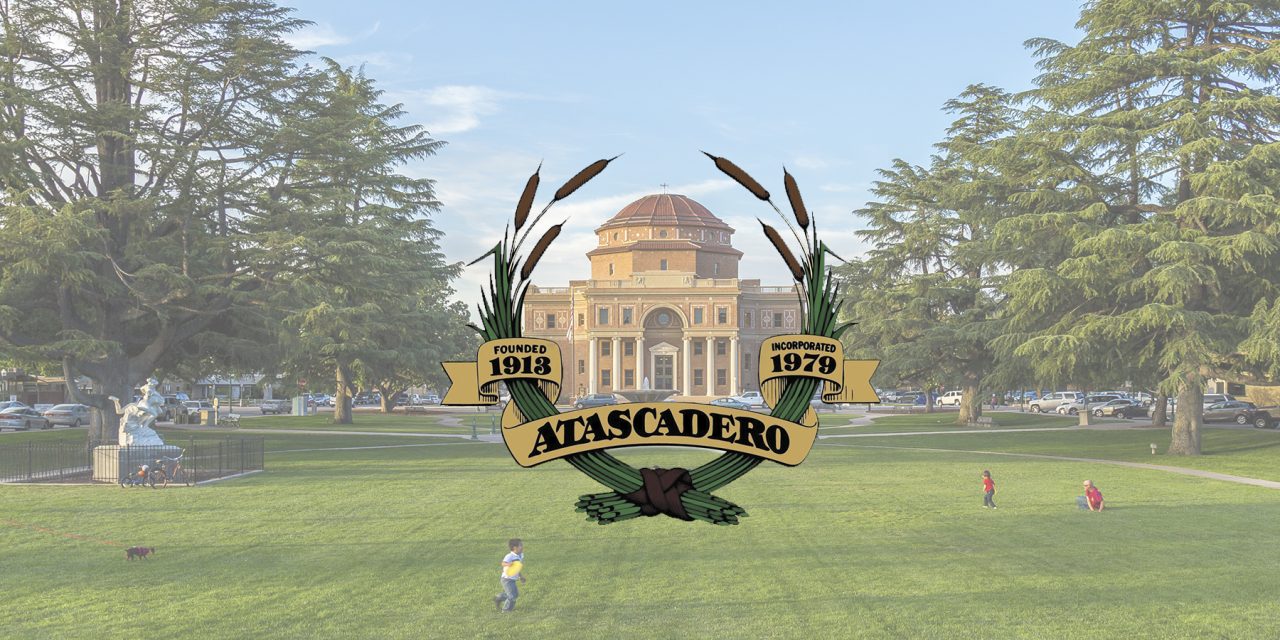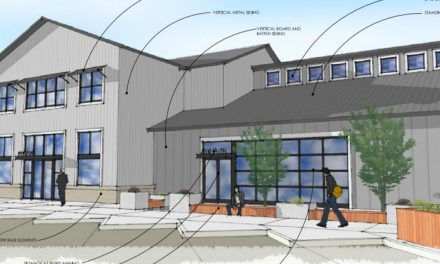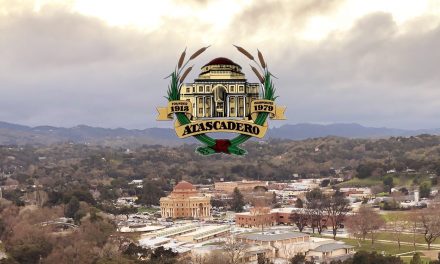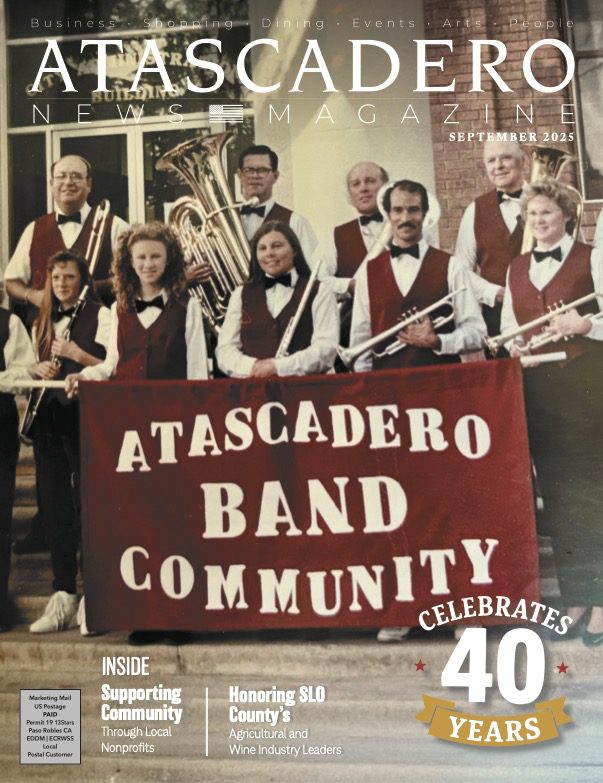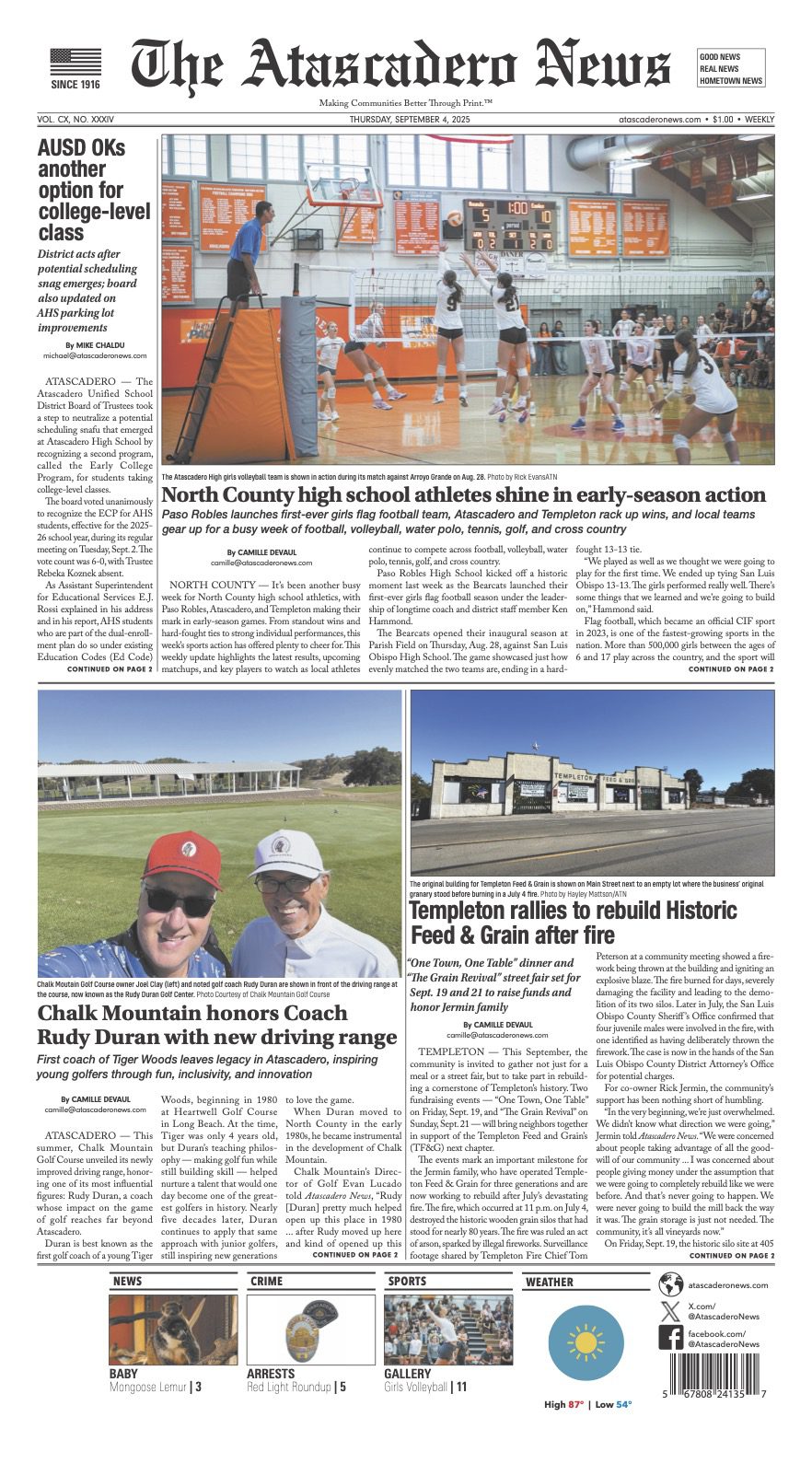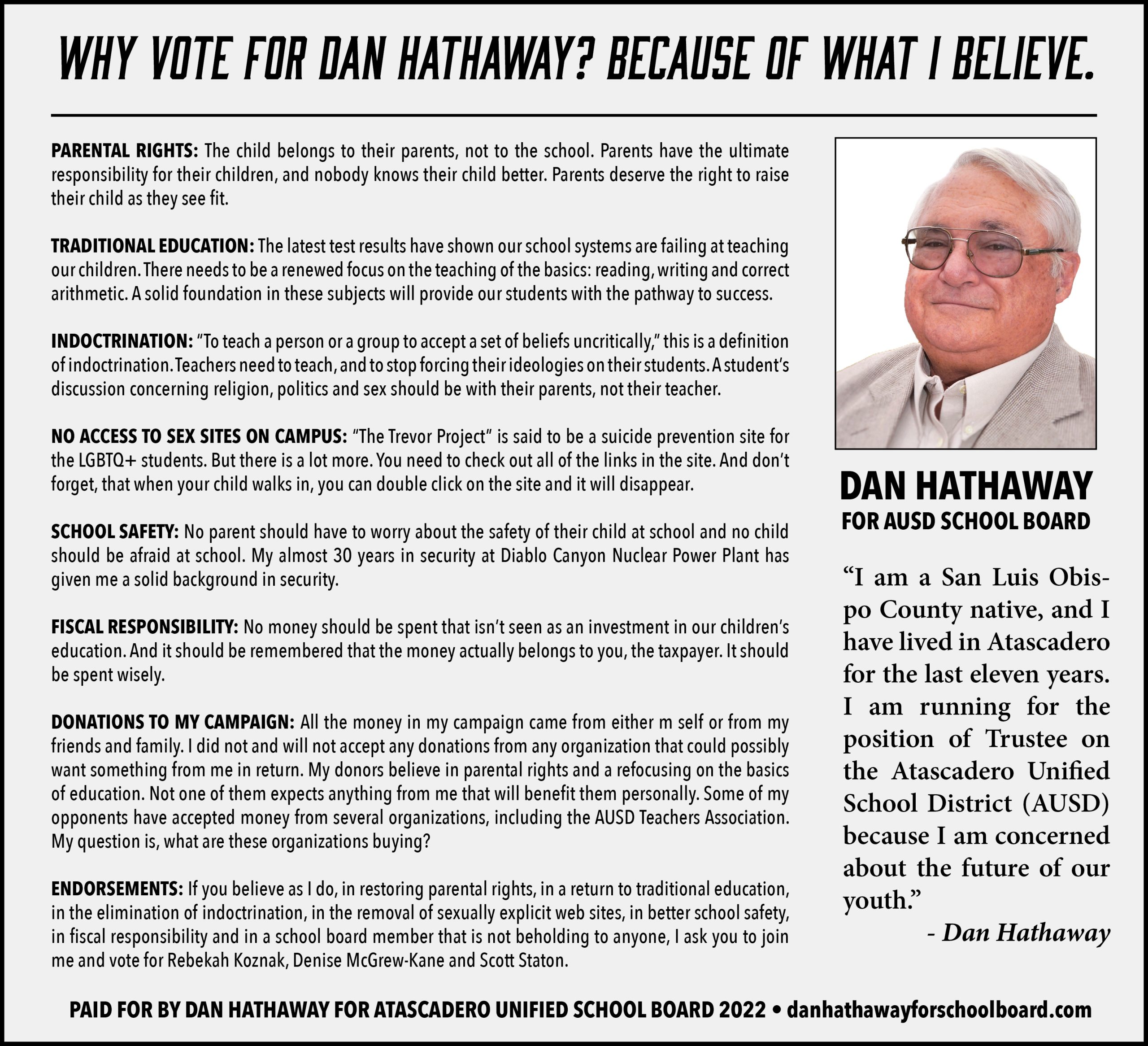City OKs wastewater rate hike after non-majority protest discovered
ATASCADERO — Approving a plan that City Manager Jim Lewis called one with “stability and foresight,” the Atascadero City Council passed the city’s Operating and Capital Budget for the next two fiscal years (2025-26 and 2026-27) at the council’s regular meeting on Tuesday, June 10.
In introducing the item, Lewis praised the staff in putting together the budget.
“These people worked seven days a week, countless hours, and produced a responsible and thoughtful budget,” he said. “I thank you all for your dedication and sacrifice over the last few weeks.”
“We hadn’t done a theme for the budget in past years, but we decided to institute one this year: ‘Investing in our future with stability and foresight with a focus on our vision of working together to serve, build community, and enhance quality of life,'” Lewis continued. “I think this document achieves that. We went with stable investments; it was not the time to make significant investments in growing staff or trying new radical programs or anything like that.”
Lewis than said it was time for the “nitty-gritty” and turned it over to Administrative Services Director/City Treasurer Jeri Rangel to present the budget.
Rangel began by focusing on the city’s General Fund, which is projected to have revenues of $36,453,960. That figure was dominated by 39% were earned from property taxes, expected to be $14 million in 2025-26 and $14.9 million in 2026-27 and 32% from sales tax, which will be $4.8 million and $5.2 million, respectively, in those years.
While the property tax revenue is considered a stable source of income, Rangel said the sales tax can be “inherently volatile,” and influenced by state and national economies.
For General Fund expenditures, employee services was the biggest item, with 68% of expenses going toward that, which Rangel said was typical of city government. Operations was the next highest at 27%.
Ultimately, total revenues for the city came out to $69,295,860 and $77,667,500 for fiscal years 2025-2026 and 2026-2027, respectively. Total expenditures for all funds are budgeted at $71,831,300 and $78,972,580 for fiscal years 2025-2026 and 2026-2027, respectively.
Rangel said the General Reserves will be above 30.6% in each of the next seven years, well above the goal of keeping at least 20% in reserve.
Rangel pointed out the city’s capital projects which total $58 million: The Downtown Infrastructure Enhancement Project, Del Rio at Highway 101 interchange improvements, pavement rehabilitations at Santa Lucia Road and Traffic Way pavement rehab, sales tax measure F-14 projects, wastewater projects, and, finally, the proposed Public Safety Center, which the city is putting aside $1.8 million annually.
The council unanimously passed the budget with minimum discussion.
“I think it was important to take the conservative approach and be careful about our spending,” Mayor Charles Bourbeau said, who along with the other councilmembers thanked the city staff for their work in getting the budget together. “I’m pleased with the way they’ve done this.”
In other business, the council unanimously passed an increase in sewer rates from $48.15 to $57.06 per household after conducting a Majority Protest Process necessitated by Proposition 218, which was passed in 1996.
Director of Public Works Nick De Bar said that the rate increase was discussed at the April 22 council meeting, and afterward sent notices of the increase and Tuesday’s public hearing to 5,611 parcels in the city. The protest process was to determine if there was enough opposition to consider a Majority Protest and block the increase.
When asked by council whether it had received written protests, staff said it had gotten just six protests, making it a non-majority protest that allowed council to vote on the increase.
The council first approved the non-majority protest position, and then passed the rate hike, both unanimously.
Also passed by council were annual assessments for the Downtown Parking and Business Improvement Area, the Atascadero Tourism Business Improvement District (ATBID), and the Apple Valley, De Anza Estates, and Las Lomas assessment districts.
The City Council will meet next on Tuesday, June 24, at 6 p.m.

